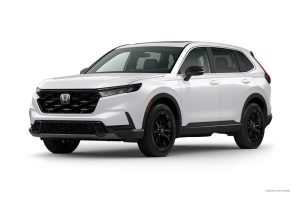The first version of the Honda CR-V came out way back in 1997. Since then, Honda has repeatedly updated and modified its classic compact crossover design, releasing no less than six CR-V generations. Unfortunately, they’re not all made equal. Some Honda CR-V years are particularly impressive, while others have glaring weaknesses and recurring technical problems.
This guide will take a look at the Honda CR-V years of which buyers should steer clear.
Why Should You Avoid Certain Honda CR-V Years?
Before we dig into the details of which specific CR-V years are important to avoid, you might be wondering why certain CR-Vs should be avoided in the first place. After all, Honda is generally regarded as one of the most reliable auto manufacturers in the business, and the CR-V is one of the brand’s best-selling models.
While that may all be true, the Honda CR-V isn’t perfect. Just like almost any other vehicle on the market – especially one that has been around for so long and had so many changes – it’s had good years and bad years. Most CR-V models are generally quite impressive and reliable. However, others have suffered from issues, bad reviews, and even recalls.
Honda CR-V 2nd Generation: Which Year to Avoid
Now, let’s take a look at which Honda CR-V years you should avoid. Since the first generation of the CR-V ran from 1997 to 2001, all first-gen models are now over 20 years old and not really worth considering. So, we’ll kick off with the second generation, which ran from 2002-2006.
2002
Of the second generation, the 2002 model was by far the worst. It logged the most customer complaints, with many users reporting a range of issues. Most notably, the air conditioning system in the 2002 model regularly broke down and required replacement. Airbag and engine issues were also linked with this CR-V.
Honda CR-V 3rd Generation: Which Years to Avoid
The third generation of the Honda CR-V stretched from 2007 through to 2011, bringing several improvements to the cabin space and fuel economy. However, not all third-gen models are worth buying.
2007 and 2008
Unfortunately for Honda, it took time for the company to perfect its third-generation model. The first two years of this release were plagued with problems, and both the 2007 and 2008 models had multiple issues.
The A/C system often broke down, just as it had in the 2002 CR-V. There were also many cases in which the airbags in these cars failed to deploy, and Honda actually had to recall certain 2007 units because of this.
Honda CR-V 4th Generation: Which Years to Avoid
Next up, is the CR-V fourth generation, which spanned the years 2012 to 2016. This generation brought the CR-V SUV into the modern era, with a sleeker design and an array of new technological features. But, once again, a couple of models in these years were worse than the rest.
2014 and 2015
The 2014 CR-V had regularly recurring technical issues, including door actuator problems where doors randomly lock or unlock while driving, as well as problematic tire pressure sensors.
Meanwhile, its big brother, the 2015 model, was one of the worst CR-V years in history. It had multiple engine issues, like unexpected stalls, weird noises, and rough idling.
Honda CR-V 5th Generation: Which Years to Avoid
From 2017 to 2022, Honda released the fifth generation of its iconic CR-V. More advanced in many ways than those that had come before, this became one of the best CR-V generations ever, but it had a bit of a bumpy start.
2017 and 2018
Unfortunately, the first two years of the fifth-gen release should be avoided. The 2017 model launched with a plethora of issues, and Honda had to recall a lot of vehicles quite early on in the fifth-gen lifecycle. Problems included poor heating, battery drain, electrical component faults, and severe engine problems.
Some of these issues were fixed by 2018, but others persisted. Notably, the 2018 model suffered from infotainment issues, engine oil problems, and a noticeable smell of petrol inside the cabin.
What Are the Best Years for the Honda CR-V?
We’ve covered the CR-V’s weakest years, but you might also want to know about the years when this compact crossover performed particularly well. Here’s a quick list of the top years for each generation, according to reviews and consumer reports:
- Second gen – 2006: The last year in the second generation lifespan was the best, with the 2006 model getting the best reviews and generally showing the fewest problems.
- Third gen – 2009: After weak entries in 2007 and 2008, Honda got back on track with the 2009 model, which had far fewer problems and great ratings for safety and comfort.
- Fourth gen – 2016: The 2016 model finally fixed most of the problems that had plagued the previous years. It’s the most fully-realized version of what Honda was going for in the fourth-gen.
- Fifth gen – 2022: The 2022 model addressed many of the issues that had been seen in the earlier iterations of the fifth-gen CR-V and stands out as one of the top CR-V models to buy.
Pick Carefully When Buying a CR-V
So, if you’re in the market for a Honda CR-V, make sure to choose with care. While the CR-V has a great reputation in general, it’s clear that certain years were much better for this vehicle than others. Buying one of the better years and avoiding the weaker ones should help you enjoy a smoother, safer driving experience, with far fewer problems to worry about.



